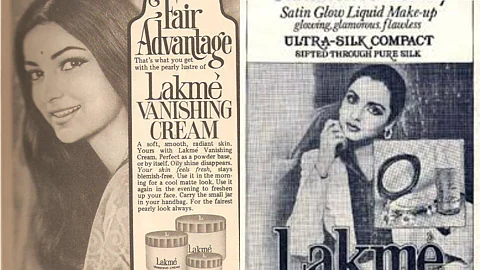
- HOMEGROWN WORLD
- #HGCREATORS
- #HGEXPLORE
- #HGVOICES
- #HGSHOP
- CAREERS
- ABOUT US
- CONTACT US

The 1950s were a strange time in India. On one hand, the nation-building project was progressing rapidly, and on the other, the class divide among Indians remained as pronounced as ever. While most Indians were struggling to make ends meet, the upper echelons of Indian society — the nouveau riche industrialists and bureaucratic elites — were living large, and their imported lifestyles were straining India’s limited foreign currency reserves. In 1952, as India was still establishing itself as a young republic, an interesting conversation took place between Prime Minister Jawaharlal Nehru and industrialist J.R.D. Tata to address this issue. Nehru, worried about upper-class Indian women spending precious foreign exchange on imported beauty products, urged Tata to develop a Swadeshi alternative. Tata’s solution was Lakmé — a cosmetics brand that would later become one of India’s most influential names in beauty and fashion.
The brand’s name, Lakmé — the French term for Lakshmi, the Hindu goddess of wealth — was suggested by Swiss-born fashion designer Robert Piguet, who served as a consultant for the brand. With Piguet and French perfumer Renoir acting as consultants, Lakmé was positioned from the very beginning as both aspirational and deeply connected to Indian identity — it symbolized the newly independent India’s aspirations to sit at the global table as an equal.
At a time when most beauty products on the market were designed for European skin tones, types, and climates, Lakmé offered Indian women something radically different: beauty products tailored for Indian complexions, sensitivities, and weather. In 1961, Simone Tata — the Swiss-born wife of Naval H. Tata — joined the brand as Managing Director and eventually became Chairperson in 1989. It was under Simone Tata’s leadership that Lakmé became the household name we recognise today.
Between the 1950s and 1990s, Lakmé operated as a division of Tata Oil Mills Company and quickly established itself in both middle-class beauty and skincare routines and upscale salons across urban India through polished, high-profile ad campaigns. Lakmé’s early advertisements often featured modern Indian women in elegant, minimalist settings — resonating with younger consumers who were negotiating tradition and modernity in equal measure. The Lakmé kajal became iconic, as did Lakmé’s signature lipsticks, which were marketed as everyday symbols of confidence for the modern working Indian woman.
But as the Indian economy liberalised, the beauty market in India saw a surge of multinational entrants like Revlon, Chambor, and L’Oreal Paris in the early 1990s. Facing increased competition from these global brands, the Tata group was compelled to sell Lakmé to Hindustan Unilever Limited (HUL) in 1996 — marking the end of the first chapter of Lakmé’s story.
Still, with more than 35 percent of the Rupees 1,100 crore Indian cosmetics market, Lakmé remains a major player in India’s fashion scene. The brand’s presence has only expanded over the decades. In 2000, Lakmé launched the bi-annual Lakmé Fashion Week — arguably India’s most prominent fashion platform, attracting international designers, models, and industry professionals. Over the years, LFW has positioned Lakmé as a cultural institution — one that's played a vital role in shaping India’s broader fashion narratives.
